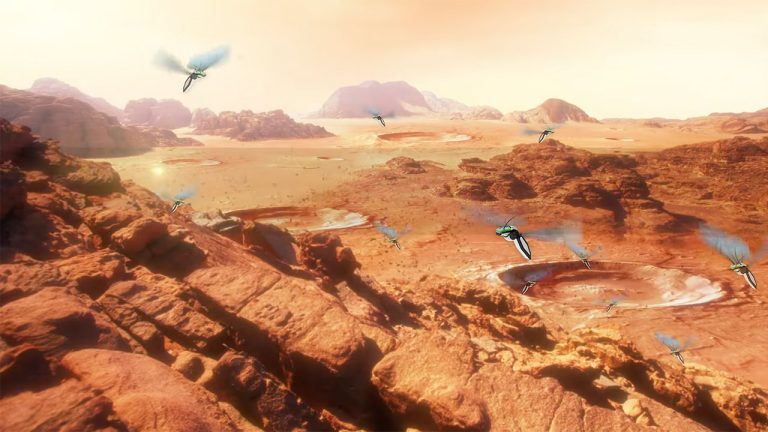Scientists have unveiled a groundbreaking invention for Mars exploration: robotic bees known as Marsbees. Developed by a collaborative team from the University of Alabama at Huntsville and Japanese researchers, the Marsbees are designed to expand the scope of Mars missions. The primary goal of the Marsbee project is to create a 3D topographic map of Mars using a swarm of these flapping-wing robots.
Each Marsbees is equipped with sensors and wireless communication devices and operates from a mobile base that serves as a charging station and main communication hub. The Marsbees‘ design incorporates insect-like flexible wings to maximise aerodynamics and reduce power consumption, allowing them to hover efficiently in the low-density Martian atmosphere.
The Marsbees swarm facilitates the creation of reconfigurable sensor networks, robust systems and collaborative data collection. By integrating the depth measurements collected by the Marsbees, scientists aim to improve the effectiveness of Mars rovers in their exploration missions.
This multidisciplinary project highlights the benefits of bio-inspired flight solutions that are particularly energy efficient in the Martian environment. Researchers believe that Marsbees represent a significant advance in space exploration technology, offering greater flexibility and robustness compared to traditional systems.

